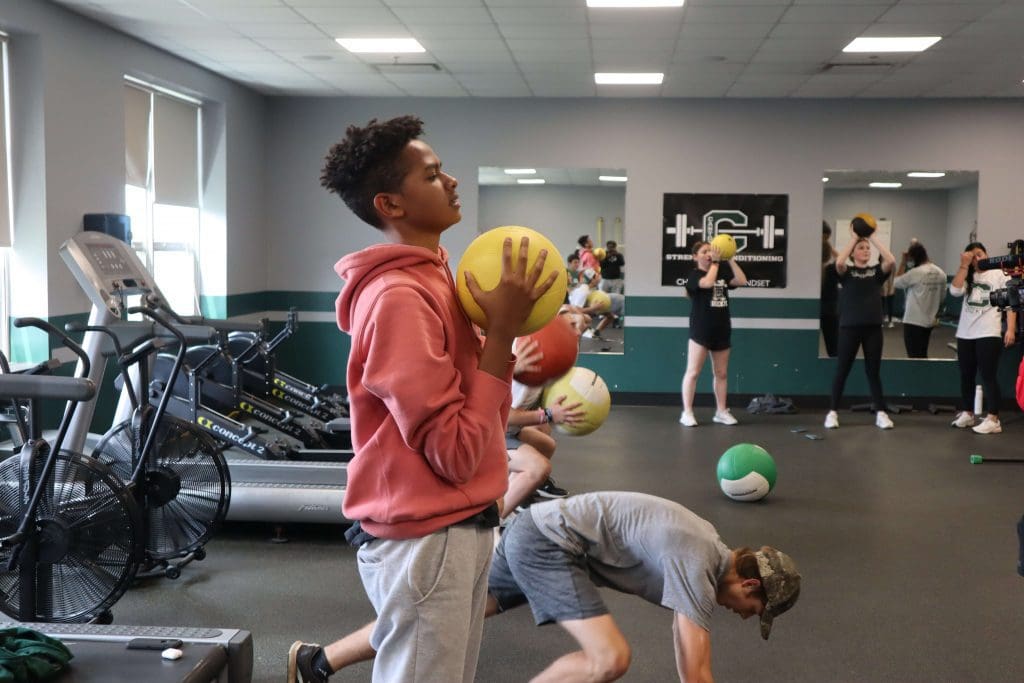Quality physical education is a popular buzzword in the world of PE. But actually defining and outlining the what, why, and how of quality physical education is a little more challenging. In this article, we set out to provide actionable steps to ensure school districts’ physical education classes serve students’ needs and improve health and wellness. In addition, we offer ideas and insights for physical education teachers looking to enhance a quality program at their schools.
What is Quality Physical Education?
Quality physical education programs provide students with a planned, sequential, K-12 standards-based program of curricula and instruction designed to develop motor skills, knowledge, and behaviors for active living, physical fitness, sportsmanship, self-efficacy, and emotional intelligence.
A well-designed quality physical education program:
Meets the needs of all students
Keeps students active for most of physical education class time
Teaches self-management
Emphasizes knowledge and skills for a lifetime of physical activity and physical literacy
It is an enjoyable experience for all students
There are many ways to achieve a quality physical education program. School districts across the United States go about creating quality physical education in different and unique ways. However, more schools are shifting to a fitness education curriculum model to reflect students’ interests and long-term goal of lifetime fitness. In addition, fitness education helps meet all of the above bullets listed.
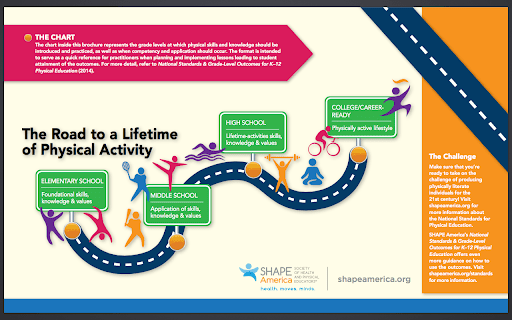
Why Quality Physical Education Is Important
Students need quality physical education in their lives now more than ever.
Sadly, 49% of teenagers today are considered overweight. This increases their risk of suffering from various preventable diseases, including heart disease – the #1 cause of death in the United States.
Coincidentally, the same percentage of students do not attend weekly physical education classes, and less than a quarter of kids meet the CDC guidelines for 60 minutes of activity a day.
Not only is physical wellness on the decline, but we are also seeing an increase in mental illness, declining academic performance, and troublesome classroom behavior issues.
While it isn’t a panacea, Physical Activity and Exercise has been shown to positively influence ALL of these troubling trends. Physical activity and exercise can improve physical health, mental health, academic performance, and other public health factors facing our students.
It is for this reason, school districts must reinvest in Physical Education, while at the same time, physical education teachers must ensure that their physical education curriculum is teaching students how to live healthier, more active lifestyles. To do so effectively, we must help them find their passion for activity an exercise, which means expanding our curriculum beyond the traditional “games” model.
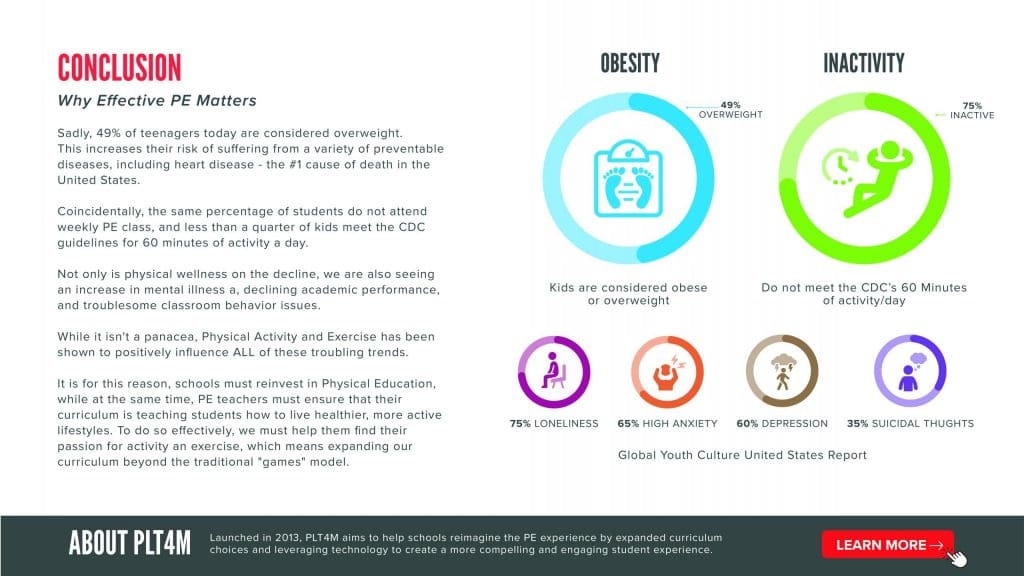
The How of Quality Physical Education
There are endless ways to create quality physical education programs. But physical educators at elementary schools, middle schools, and high schools can all take similar steps in creating quality physical education programs:
- Understand your district curriculum and the alignment to the National PE Standards
- Work collectively with other district teachers to lay out the scope and sequence
- Use your scope and sequence to align your curriculum vertically and horizontally throughout the district
- Map out your Curriculum
- Create your pacing guide in accordance with your school’s calendar
- Identify what resources you need to be successful
Physical educators can work backward with the big-picture goal in mind. The “Understanding by Design” framework is a great place to start when planning a curriculum. Understanding by Design is a tool for educational planning focused on teaching for understanding, using “backward design” – the practice of looking at desired outcomes in order to design performance assessments, curriculum units, and classroom instruction. (See more on this in our full article on curriculum mapping)
National Standards & Grade Level Outcomes
Physical educators can determine the desired outcomes and then work on developing curriculum and PE lessons from there. Looking at Shape America’s standards and outcomes is a great place to start. These help guide quality physical education programs.
SHAPE America’s National Standards for K-12 Physical Education defines what a student should KNOW as a result of a highly effective physical education program.
SHAPE America’s Grade-Level Outcomes for K-12 Physical Education defines what a student should be able to DO as a result of a highly effective physical education program.
Physical educators can use the standards and outcomes to create a vertically and horizontally aligned curriculum.

Vertical Alignment
Vertical alignment is the process of organizing curriculum from one grade level or content area to the next.
If your curriculum is lacking in this area or if you have a large department, then you really should expect this PROCESS to take some TIME.
USE your RESOURCES – don’t start from square one
One UNIT at a time- Review standards and START SMALL
Create a FOUNDATION to BUILD on
When a curriculum is vertically aligned, students enter each course with background knowledge to ease the transition as the school year starts.
Start with the standards
Gather and review data
Collaborate with your team
Build Curriculum maps
Keep communication open
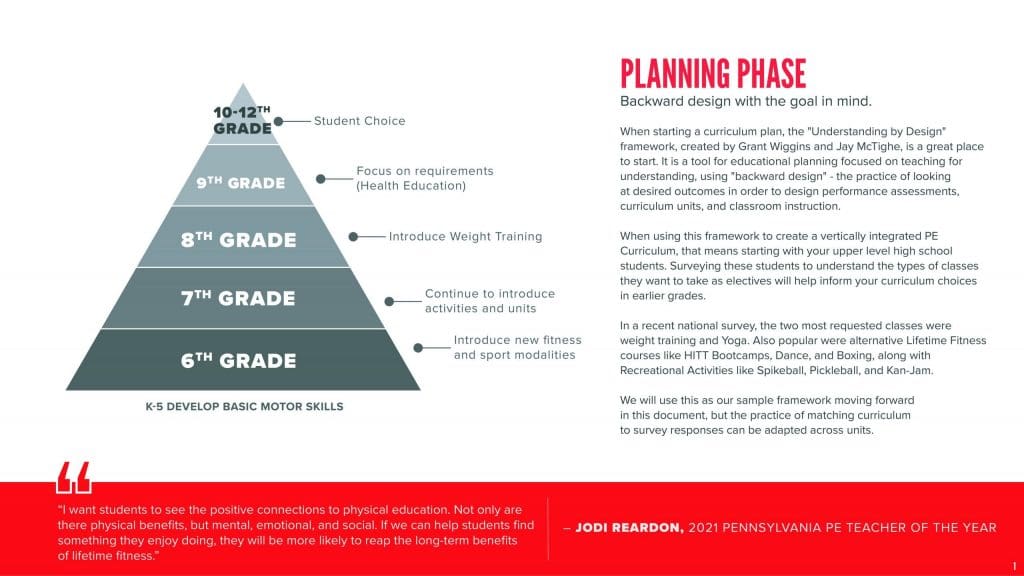
Horizontal Alignment
A quality physical education program with a horizontally aligned curriculum has the same material being taught across different classrooms in a given grade level, or course.
The material being taught in each course aligns with the learning standards and assessments established by the school district or state. For example, what students are learning in one 9th-grade PE class, they are learning in all 9th-grade PE classes. This provides:
Consistency of student experience
Students work toward the same outcomes
Consistency in rigor
Consistency with assessments
You are on the same page with all instructors who teach the same course
You are on the same page with all instructors who teach the same grade levels EX: All elementary PE teachers are teaching the same content to 5th grade students.
Horizontal alignment doesn’t mean there cannot be variety and choice within quality physical education. For example, many high school physical education classes are elective offerings. This means that students can choose what types of PE lessons will make up their physical education classes. More on that later!
Curriculum Mapping and Pacing
Curriculum mapping requires breaking down all the standards and topics and putting them in a sequential order to guide how you teach, what you teach, and when. Therefore, curriculum mapping helps teachers plan the time they need to cover a unit of study, what is necessary to be assessed and ensure that everything is covered within the given time. It documents what is taught and when.
From here, physical education teachers can create a pacing guide for what they plan to cover weekly in physical education classes. You can use a pacing guide to plan your class week-by-week and ensure you meet your course standards. It will help you know what to teach and when to teach it. While this may seem obvious, it can help you set realistic goals and plans for what you can cover in a semester.
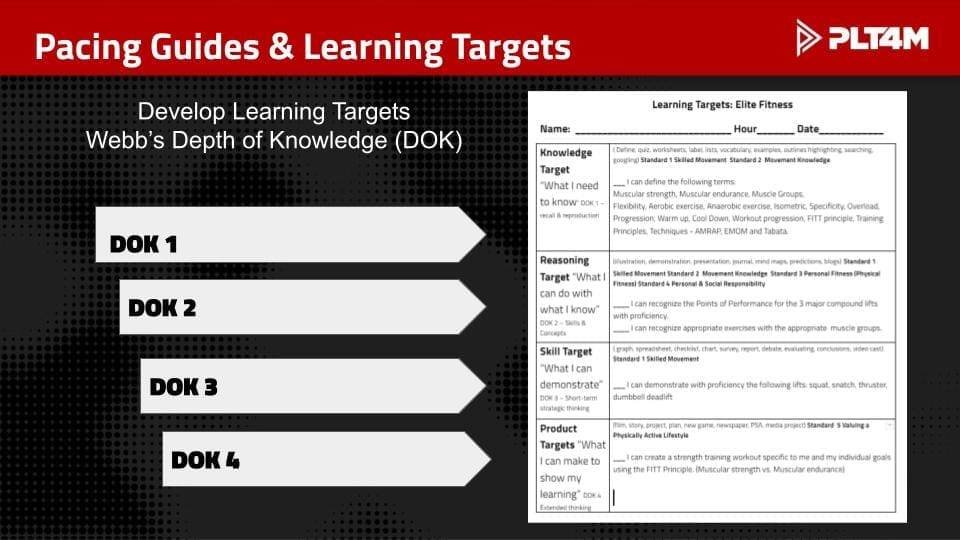
Other Factors For Quality Physical Education
While curriculum is a core component of quality physical education, other factors and considerations exist for rounding out a quality program.
First, assessment is integral to evaluating student learning and supporting student achievement. Assessments in physical education can be outlined and defined as part of the curriculum mapping process. Fitness assessments can help support student goals and deepen learning and engagement.
Next, technology can be an invaluable resource for quality physical education. Physical education curriculum and PE lessons can be delivered and implemented with the support of technology. In addition, teachers can track and monitor progress and activity. Furthermore, technology can increase student learning, motivation, and engagement.
Finally, physical education teachers aren’t alone when setting out to create quality physical education programs. Professional learning and professional development opportunities can support physical education teachers.
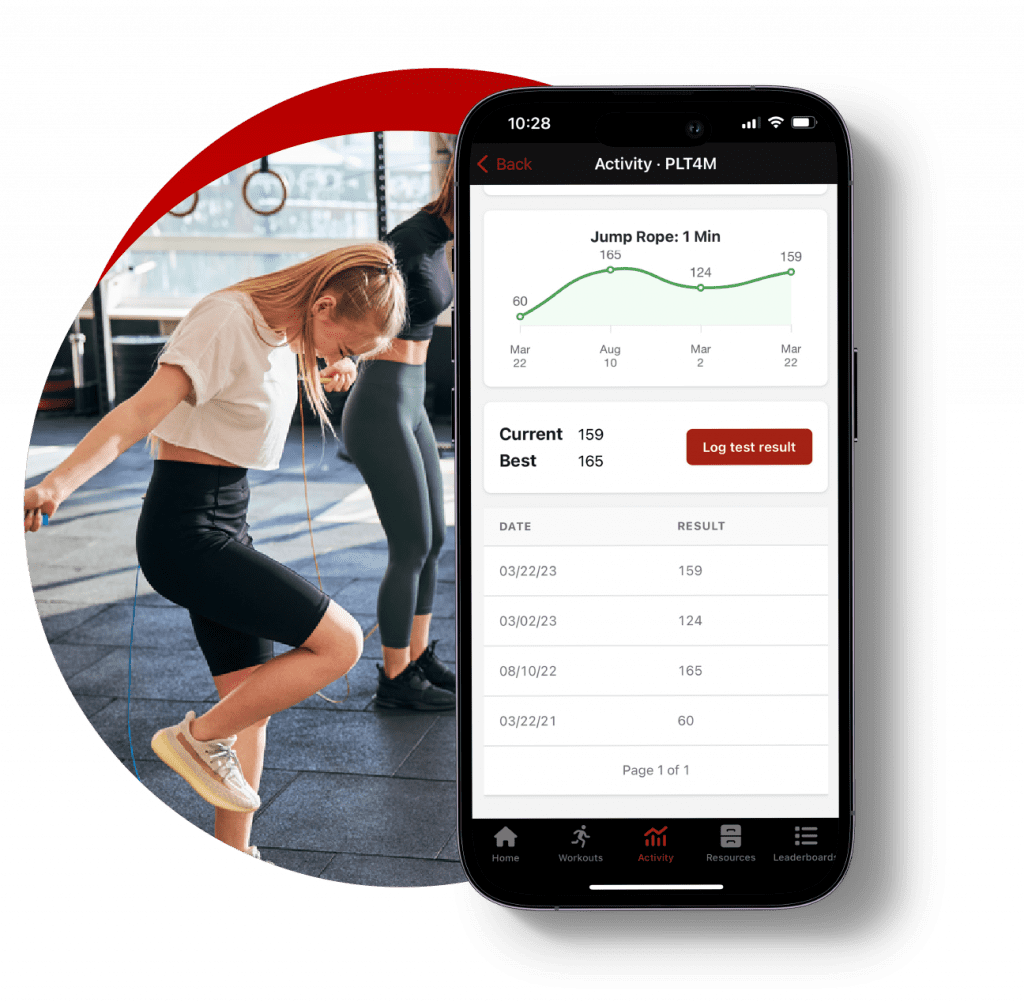
Key Takeaways For Quality Physical Education
Many factors go into creating a quality physical education experience for students. And in many school districts across the United States, physical education time and resources are on the chopping block. Therefore, let’s clearly state some key takeaways on quality physical education:
Physical activity does not equal quality physical education – we must create space and time for children of all ages to learn and develop lifelong fitness, health, and wellness skills.
Student outcomes and goals should help drive the creation of quality physical education programs.
Physical fitness and fitness education are becoming a core component of a quality program, especially for middle school and high school students.
Curriculum, technology, and professional development can support physical education teachers to enhance physical education as a subject.
